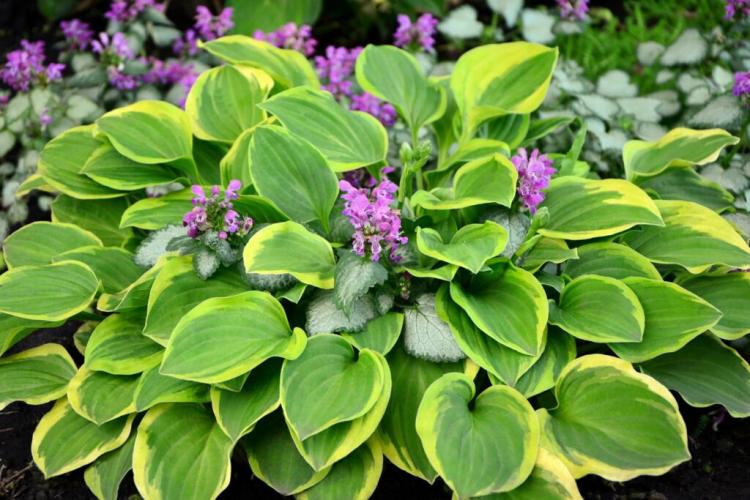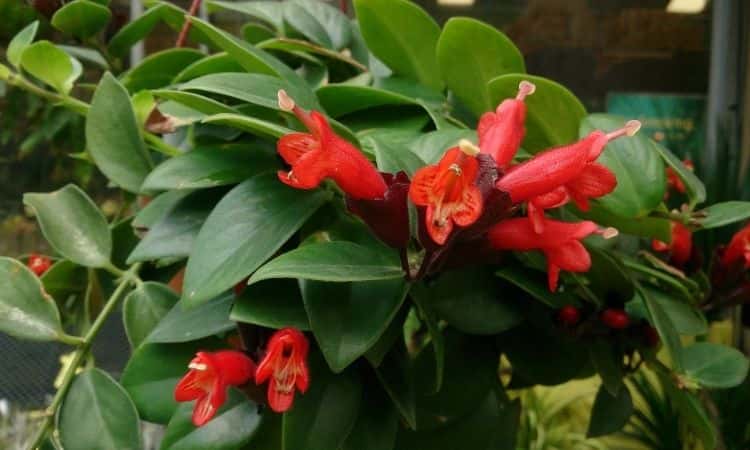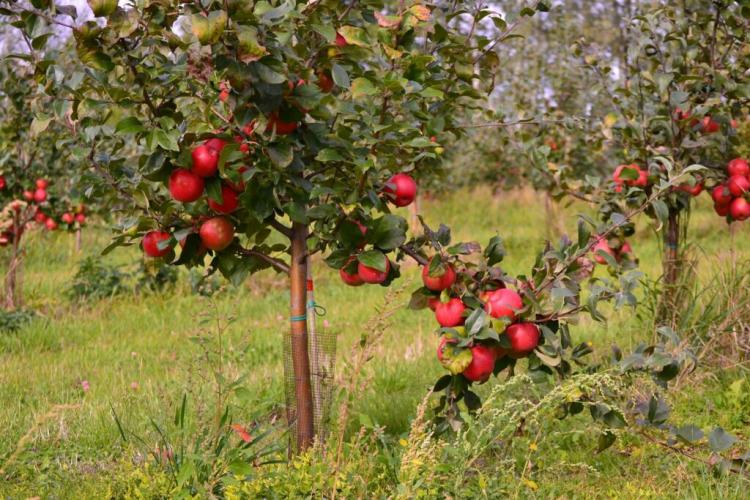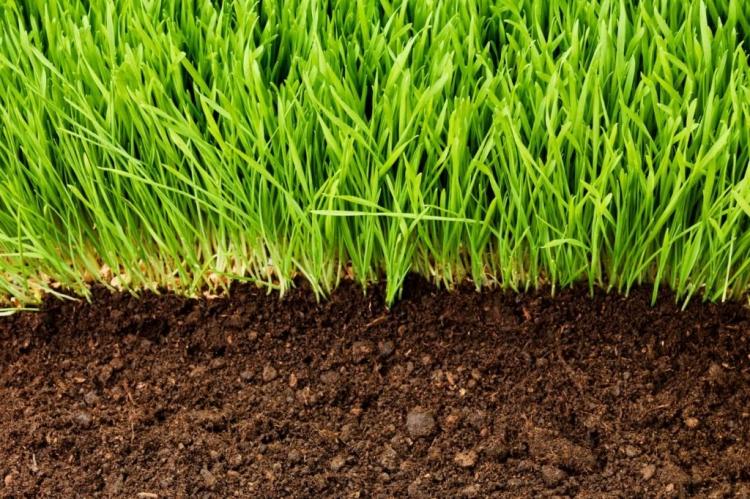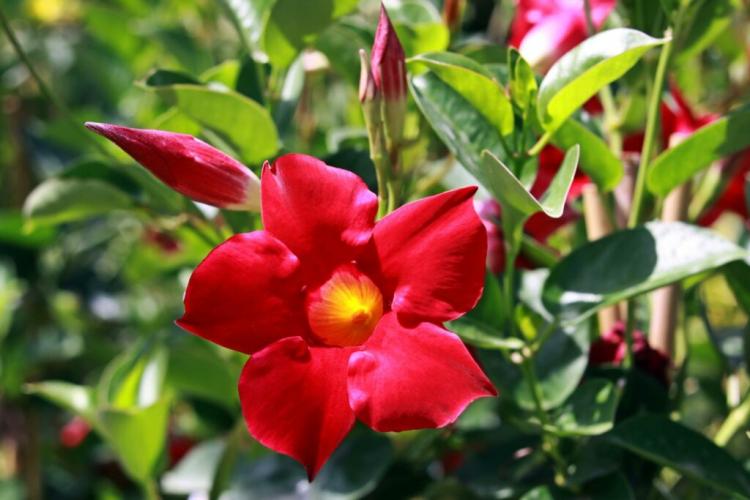Comfrey: planting & caring for the medicinal herb
Comfrey is an ancient medicinal plant that is also very interesting for bumblebees. We introduce the comfrey herb and reveal how it can be grown in your own garden.
Comfrey ( Symphytum officinale ), also called wallwort, has all kinds of healing powers inherent in it. Therefore, people have been using it for thousands of years. The Boraginaceae is often found as a native weed in species-rich meadows and forest edges. We show the diverse uses of comfrey and explain the cultivation of the valuable herb step by step.
Comfrey: origin and characteristics
Table of Contents
Comfrey is a perennial wild and medicinal plant native to us. If it feels comfortable in its location, the plant can live up to 20 years.
The genus Comfrey ( Symphytum ), in English “Comfrey”, includes around 40 species that are native to Eurasia and North Africa. Our native species, the common or true comfrey ( Symphytum officinale ) occurs frequently between Spain and China.
Comfrey is an herbaceous, perennial plant that dies above ground in winter and sprouts again in spring. The deciduous perennial takes root to a depth of 1.80 meters, becomes about 30 to 60 centimeters high, and forms large leaves. The stiff stem and the leaves are coarse and bristly hairy, which is a typical feature of the members of the predatory family – as well as forget-me-not ( Myosotis ), bee friend ( Phacelia tanacetifolia ), an adder’s head ( Echium vulgare ).
Several of the flowers hang down in so-called double coils. They are reminiscent of small bells and are colored purple, yellow, or white. The flowering period of the comfrey extends – depending on the variety and location – from May to October. Only bee species with a long proboscis can use the nectar of the comfrey flower, which is why bumblebees ( Bombus sp.) And other large wild bees usually come to the banquet. However, most of the flowers are sterile and seeds rarely form. Wallwort reproduces mainly vegetatively via the runners of its rhizome, i.e. its creeping storage sprout.

Genuine comfrey: types and varieties of comfrey
A distinction is made between several types of legwork, which are used either as medicinal plants, forage plants, or ornamental plants. We introduce you to the most important types and varieties of comfrey:
The real comfrey is divided into three subspecies: the white comfrey ( Symphytum officinale ssp. Bohemicum ), the real comfrey ( Symphytum officinale ssp. Officinale ), and the swamp comfrey ( Symphytum officinale ssp. Uliginosum ). In addition to the common comfrey, the rough comfrey ( Symphytum asperum ) from the Caucasus can also be seen more often.
This species reaches heights of growth of up to 180 centimeters and is therefore significantly higher than the real comfrey. It was introduced as a fodder plant in the 16th century because it is much poorer in harmful pyrrolizidine alkaloids. A hybrid, the feed comfrey (Symphytum x uplandicum ), emerged from the real comfrey and the rough comfrey. This is completely free of alkaloids and so it is not only fed but also administered as a medicinal plant in capsules for internal use.
A decorative type of comfrey is the blue comfrey ( Symphytum azure ), which is particularly popular with its sky-blue flower color. In many perennial nurseries, you can find various varieties of the Lesser Caucasus Comfrey ( Symphytum grandiflorum ). The variety ranges from ‘Miraculum’ with red-pink-white flowers to ‘Hidcote Blue’ with deep red buds and white-pale blue flowers to ‘Blue Bells’ with large, blue-violet flowers and wine-red buds.

Plant and multiply comfrey
If you want to plant legwork, you can prefer it with seeds, propagate it vegetatively by division or use young plants from perennial nurseries.
Comfrey seeds are sown in March on a warm window sill in low-nutrient potting soil. In warm areas, you can also sow directly into the ground from April. The sowing depth is 5 centimeters.
Comfrey germinates somewhat irregularly and should be converted into nutrient-rich soil, after about three weeks if it is pre-grown in the house. In May, the young plants are placed in their final location, where they take root over the summer and thus survive the winter.
You might so like: When And How To Fertilizing Raspberries?
However, dividing an existing comfrey perennial is much easier than sowing. With a sharp spade, part of the roots and buds are cut off in spring and planted in a new place. Of course, you can also plant pre-grown plants from the perennial nursery or the garden center. When planting, be careful not to damage the rhizomes and put enough high-quality potting soil into the generously sized planting hole.
Comfrey can be reproduced from its own seeds, the so-called Klaus fruits. However, they rarely form because most of the flowers are sterile. For this purpose, the seed heads are collected in autumn and left to dry out in the house so that they can be sown in the coming spring. As already described, the vegetative propagation by root cuttings and division is the much simpler variant.
Comfrey location
If you want to plant comfrey, you should find an optimal place for it is partially shaded to sunny areas that have a well-moist, humus-rich soil. The ideal locations for comfrey are places under the canopy of old trees, where the plant usually finds the necessary humus soil.
Care of comfrey
Real comfrey and related species hardly need any care, as wild plants are very adaptable and undemanding. When planting comfrey, there are only a few points to consider when watering and fertilizing.
You might so like: Growing Marjoram: At Home In The Garden And Balcony
Pour comfrey
The real comfrey always needs well-moist soil. In the first year after planting in particular, sufficient watering should always be provided, because dried out soil means that the medicinal plant will die. Even with older plants, you should water again and again in extremely dry summers.
Tip: With a mulch layer made of organic materials, the soil will stay moist for much longer and you will save liters of irrigation water.
Fertilize comfrey
As a perennial plant, the wallwort often stands in the same location for many years. Now and then, the nutrient supply should be replenished by fertilizing, especially if the comfrey is harvested regularly. Spreading an organic universal fertilizer in the spring is sufficient to cover the needs of comfrey. Alternatively, it is also possible to use mature compost.
Use of comfrey
The real comfrey looks back on a long history as a medicinal plant and is still often used today as a comfrey ointment. But comfrey can also be used for fertilization.
Comfrey as fertilizer
The herb of the comfrey can be fermented into nutrient-rich plant manure. In addition to the main nutrients nitrogen, phosphorus, and potassium, it also contains numerous micronutrients and silica. The liquid manure can also be used to fertilize and strengthen plants against pathogens and pests in the ratio of 1:10 in the irrigation water. However, in order not to weaken the comfrey itself too much, only the non-blooming shoots should be harvested – a maximum of four times a year.
You might so like: Sea buckthorn planting: everything about cutting and the best species
Comfrey as a medicinal plant
Only real comfrey has been used as a medicinal plant and has been so since ancient times. The name of Wallwurz, both in German and in Latin, indicates one of the most important areas of application, bone healing with comfrey. Symphytum and the old German word “Wallen” mean “grow together” and “leg” used to be called bones.
For treatment one used the root or, less often, the comfrey herb. Both contain mucilaginous substances, saponins, tannins, the skin-caring allantoin, and, typical for leafy plants, pyrrolizidine alkaloids, which are toxic to organs and tissues when used internally. Real comfrey or comfrey ointment should only be used externally and not be applied to open wounds. The comfrey effect is a pain reliever, wound healing, and anti-inflammatory. That is why ointments, gels, and other comfrey extracts are mainly used for sports injuries such as strains and bruises, but also rheumatic pain.
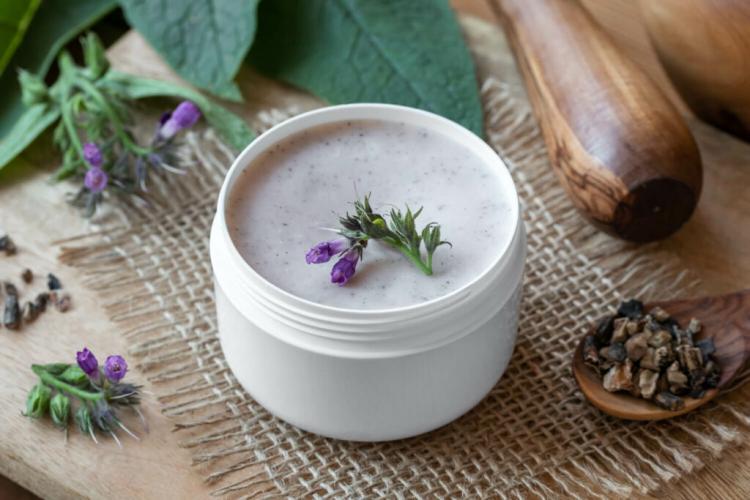
Tip: make comfrey ointment yourself
To make a comfrey ointment from the raw product, the comfrey root, an oil extract must first be made. To do this, chopped comfrey roots are placed in olive oil in a closed vessel for four to six weeks. Then, with the help of beeswax and a little heat, an ointment can be made from it.
Humans have used the healing powers of plants to alleviate all kinds of ailments since ancient times. We introduce you to the 10 best medicinal plants from your own garden and what effects they promise.

